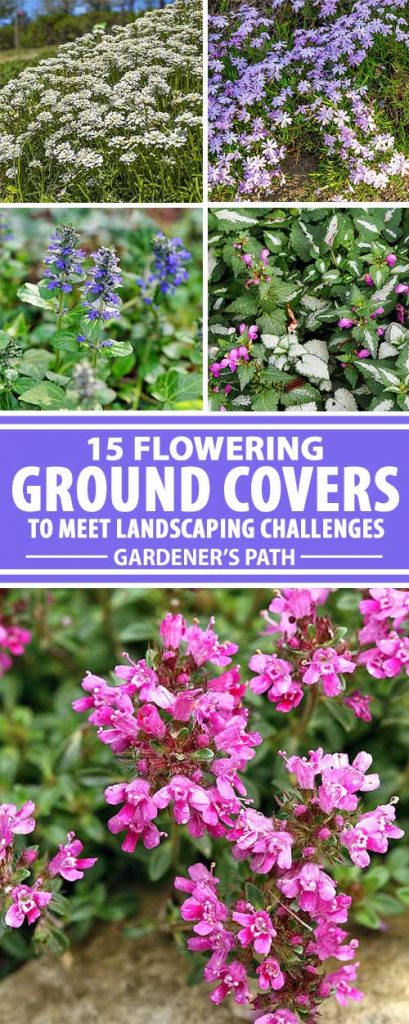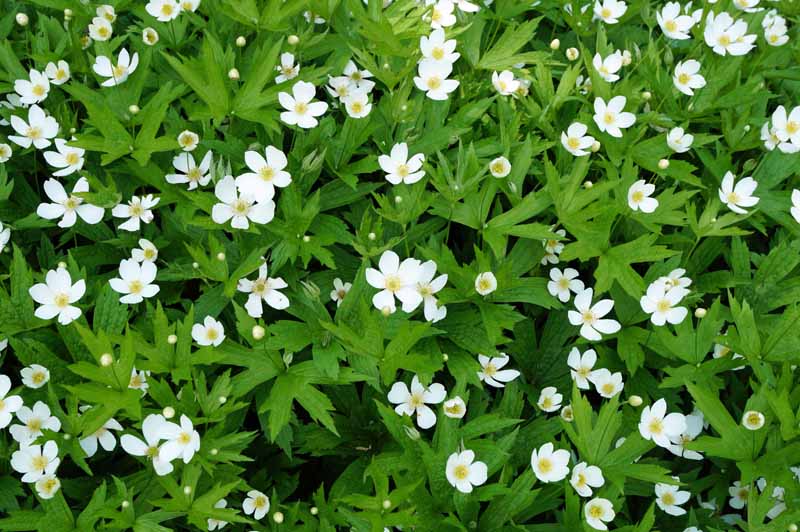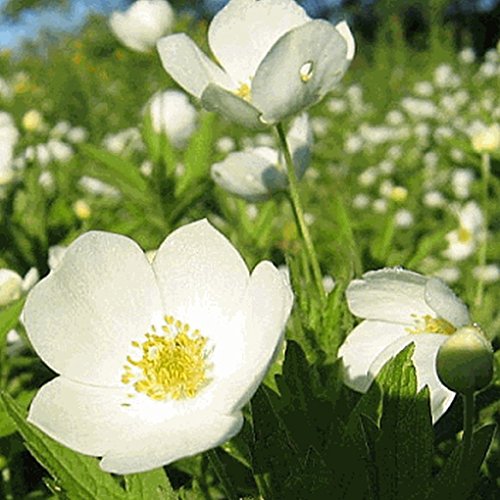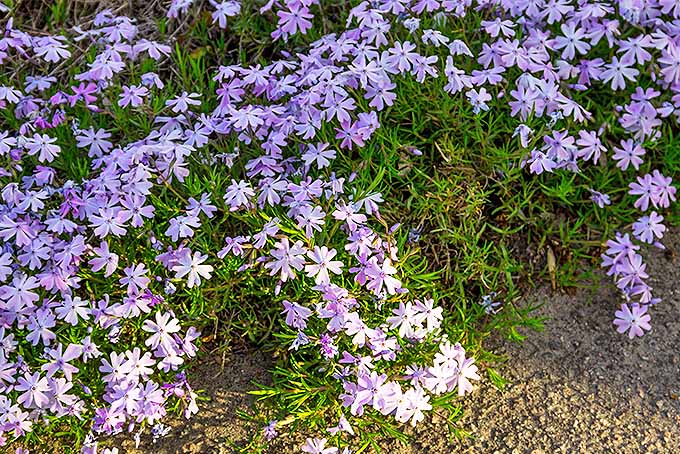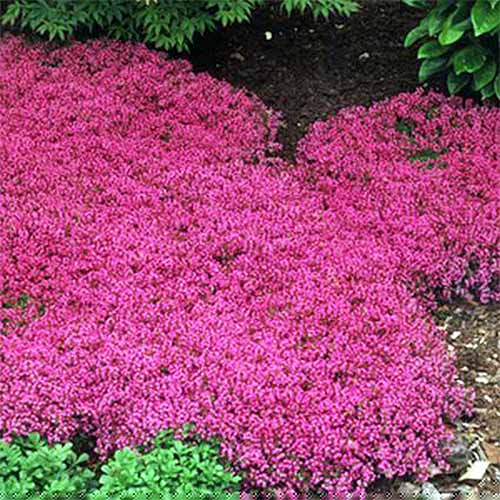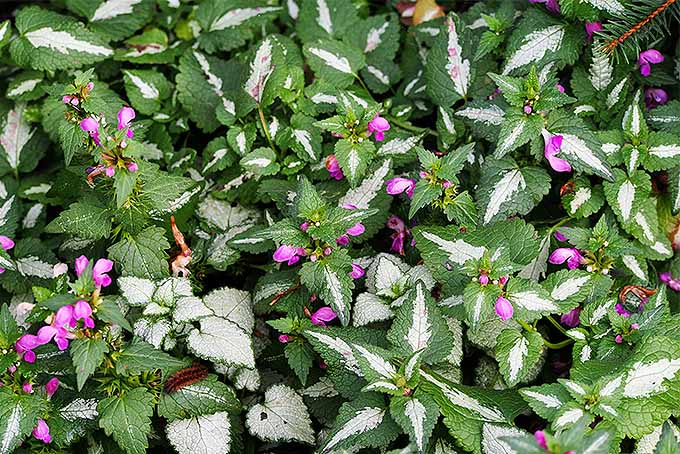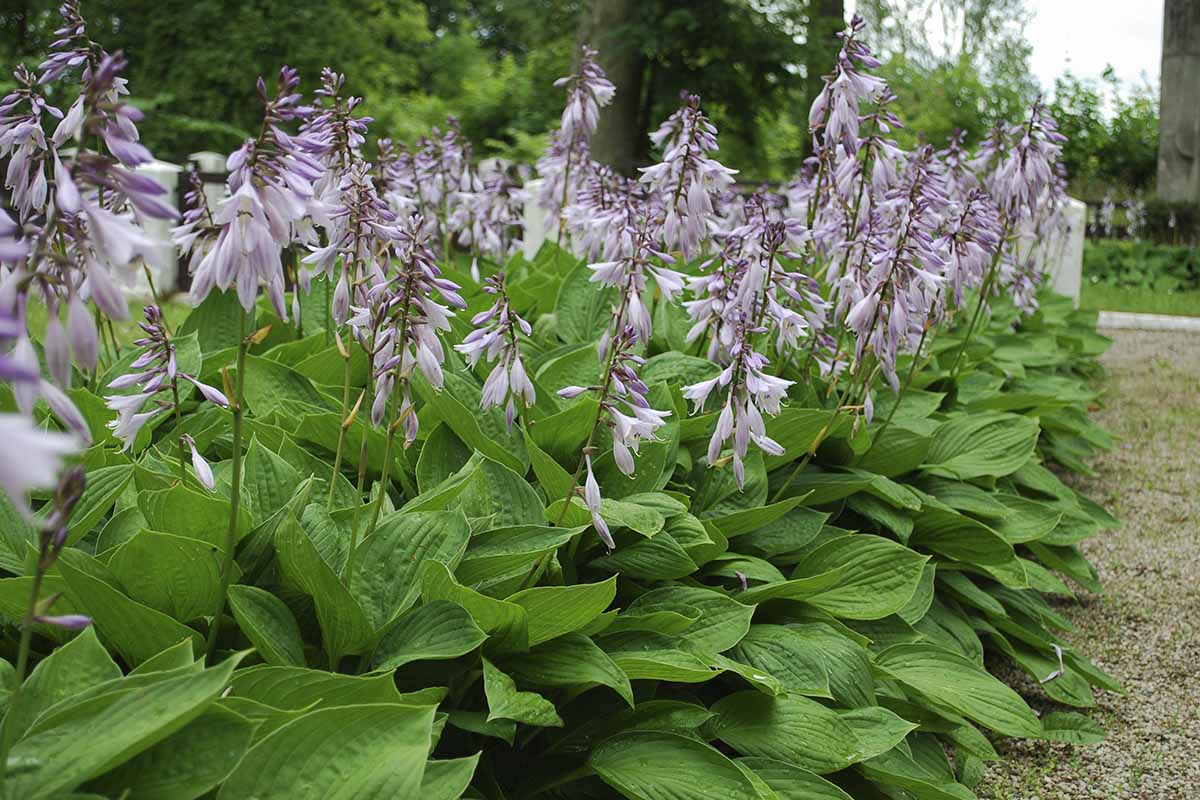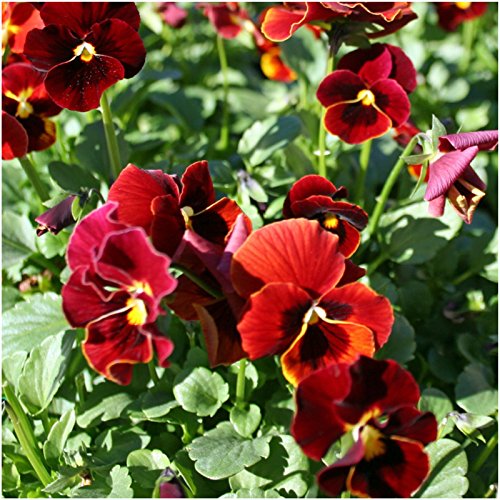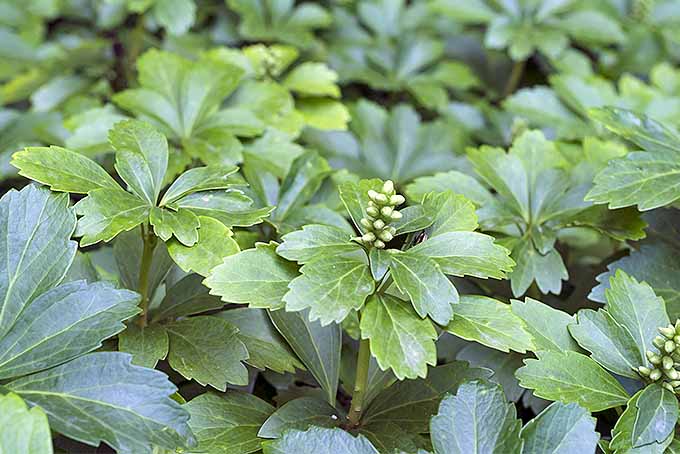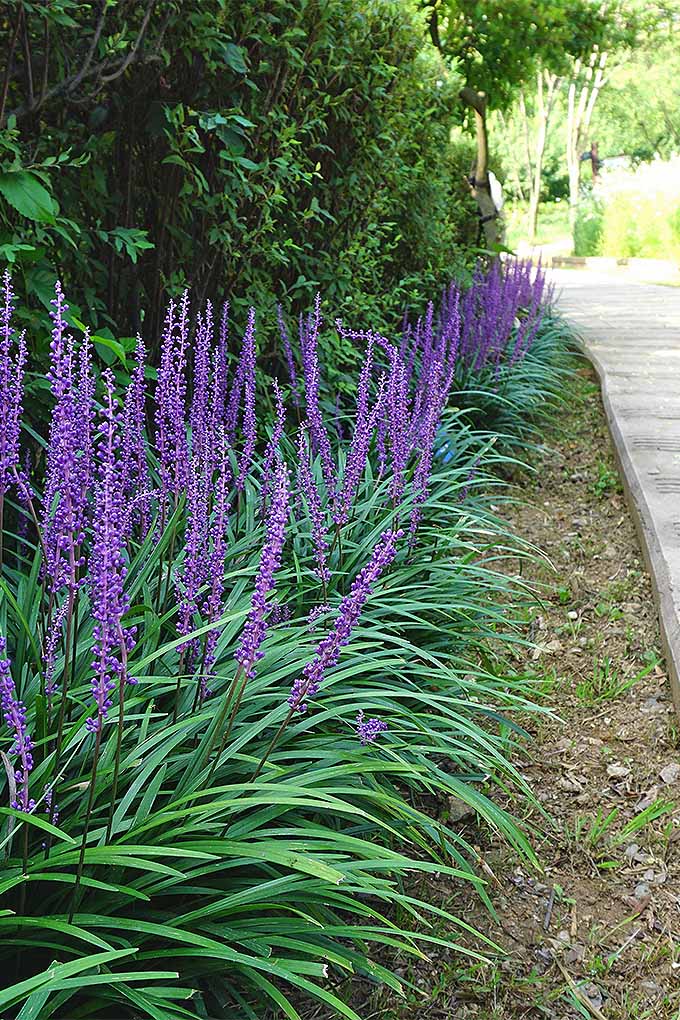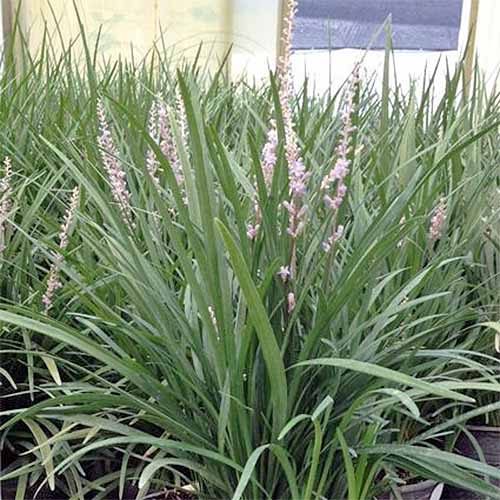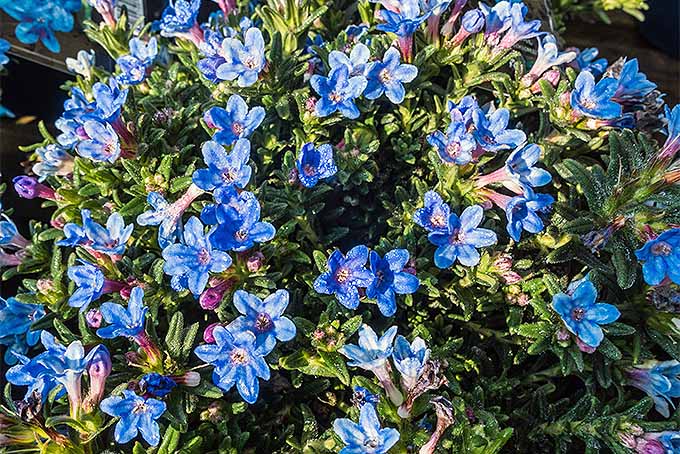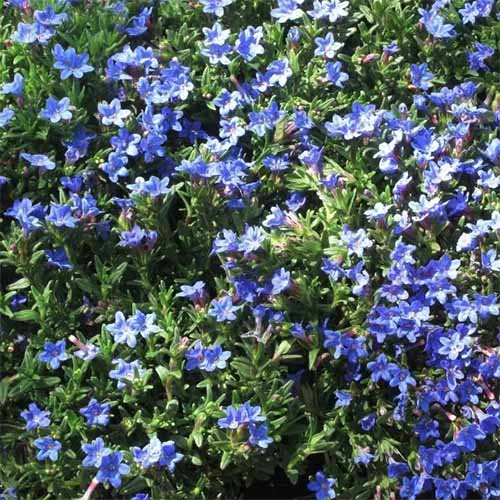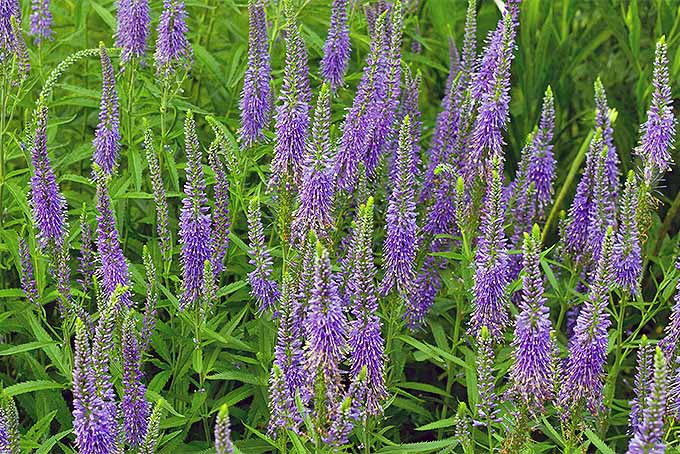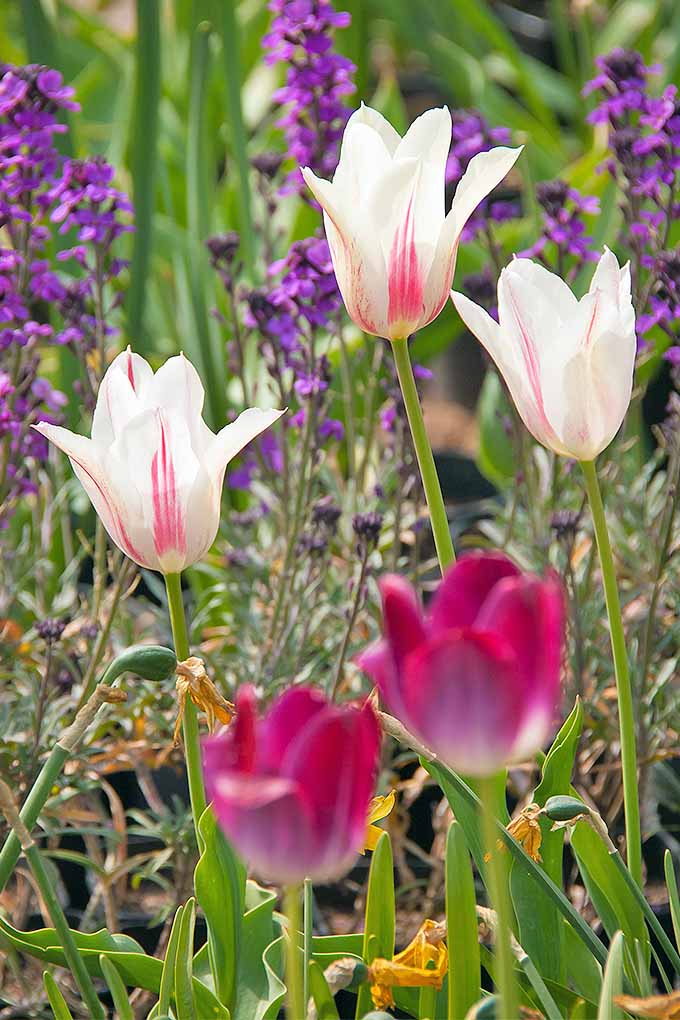They’re low-maintenance landscaping solutions to common problems and questions like:
What should I plant on a slope that’s too steep for my lawnmower?What will grow under a shady tree with prominent roots?How can I create a uniform border along my driveway?What can I plant that I can walk on, without having to mow?
And ground covers that bloom are not just functional – some are stunning! We link to vendors to help you find relevant products. If you buy from one of our links, we may earn a commission. Here’s an idea: Look at your front lawn. If it’s like mine was, it’s a sea of green waiting to be thatched, seeded, fertilized, watered, and mowed, on a rotating basis, year in, year out. Read on to discover 15 flowering ground covers that are sure to make your outdoor space more attractive, and your yardwork easier. Here is the lineup: Some ground covers are only a few inches tall, and others top out at two feet or more. What qualifies them for this category is not their height, but their function: To form interconnected mats via creeping or clumping that crowd out weeds and form a continuous expanse of foliage. If you’re thinking of converting a lawn area to a network of creeping or clumping plants, be sure to consider the need for pathways to facilitate movement through your landscape. Also, before planting any creeping or clumping plant, particularly those that claim to be fast growing, refer to the USDA list of Introduced, Invasive, and Noxious Plants. What is desirable in one state may be considered a nuisance in another. In warmer climates, this plant is evergreen. Topping out at six inches, it derives its name from spikes of tiny bugle-shaped blossoms that range in color from blue to white. The leaves of this plant are glossy, toothed or smooth, and often tinged with shades of purple. Bloom time is May through June. ’Black Scallop’ Bugleweed Nature Hills offers A. reptans ‘Black Scallop’ in one-gallon pots.
2. Canadian anemone (Anemone canadensis)
Perennial Canadian anemone (Anemone canadensis) is a US native wildflower that spreads well in Zones 3 to 8, prefers moist soil, and thrives in full sun to part shade. Its height varies from one to two feet. Blossoms are individual and white in color, and leaves are bright green with toothed edges. Canadian Anemone Native Wildflower Seeds
3. Candytuft (Iberis sempervirens)
Candytuft (Iberis sempervirens) is a woody, mounding perennial that likes full sun and well-drained soil, and tolerates drought. It’s suitable for Zones 3 to 8, and reaches a height of about 12 inches. In warmer climates, this plant is evergreen. The blossoms of candytuft consist of sweetly scented clusters of white petals, which are often so profuse that you can’t see the elongated green leaves below. Bloom time is April through May. ’Whiteout’ Candytuft You can find packets of 100 or 1,000 seeds available from True Leaf Market.
4. Creeping Phlox (Phlox subulata)
Creeping phlox, or moss phlox, makes a bold statement as a carpet of color in shades of pink, blue, or white. Leaves are small and evergreen. It stands up to light foot traffic and is lovely cascading over slopes and garden walls. This is a native variety suitable for Zones 3 to 9 that is perennial in most regions. Plants are about two inches tall, and may exceed six inches when in bloom, during March through May. Provide sun to part shade, with average soil and moisture. Phlox Subulata ’Drummond’s Pink’ P. subulata ‘Drummond’s Pink’ is available from Nature Hills Nursery in #1 containers. Read more about growing and caring for creeping phlox here.
5. Creeping Thyme (Thymus praecox)
Creeping thyme (Thymus praecox) is a wild variety of the herb that is wonderful between stepping stones. Light foot traffic releases a delightful minty aroma. Hardy in Zones 4 to 8, this woody perennial likes well-drained dry to average soil and full sun. It’s drought tolerant, and evergreen in mild climates. Reaching approximately three inches in height, this plant has tiny, round, glossy green leaves and spikes of tiny pink-purple blossoms from June through July. ‘Coccineus’ Creeping Thyme Nature Hills offers T. praecox ‘Coccineus’ in one-gallon containers. Consult “Tasty Turf: Tips for Using Culinary Herbs as Ground Cover” for more ideas on using herbs in your landscape. Learn more about how to grow creeping thyme in our guide.
6. Deadnettle (Lamium maculatum)
Lamium maculatum thrives in Zones 3 to 8 in part to full shade. It is evergreen in temperate zones. Leaves are variegated green and silvery-white, and pink blossoms appear from May through July. This drought-tolerant plant prefers cool, low-humidity regions with well-drained soil. Varieties vary in height from several inches to about two feet, grow in a clumping or creeping fashion, and form an interconnected network that crowds out weeds and inhibits soil erosion. The shorter varieties are great for those narrow spaces in between paving stones, as well as in rockeries and border gardens, where you want to inhibit weed growth. L. maculatum ‘Purple Chablis’ features purplish-pink flowers, and reaches a mature height of eight to 12 inches, with a two-foot spread. ‘Purple Chablis’ You can find ‘Purple Chablis’ available from Nature Hills Nursery.
7. Hosta (Hosta sieboldiana)
Reliable perennials, hosta leaves vary from forest to lime green, to variegated green and white, to all white. Blooming is inflorescent in nature, with tall spikes of small white or purple blossoms appearing from May through July. Some varieties are sweetly scented. Also called plantain lilies, hostas have always been a staple in my family’s gardens. My great-grandmother had enormous plants with foot-long dark green leaves. These were divided for propagation at my parents’ home and later my own, in a rite of passage that continues today. Perfect for Zones 3 to 8, most prefer shade and rich, damp soil. Heights vary, with some reaching over two feet. Hosta ’Elegans’ Nature Hills offers H. sieboldiana ‘Elegans’ available in one-gallon containers.
8. Horned Violet (Viola cornuta)
Horned violets are annuals with green, rounded leaves, and scented two-toned blossoms in shades of purple and blue that bloom from April through June. They are perennials in temperate climates. Reaching from six to eight inches in height, creeping horned violets are suitable for Zones 6 to 11. They require average soil and moisture, and do best in full sun to part shade. ’Arkwright Ruby’ Viola
9. Japanese Pachysandra (Pachysandra terminalis)
Japanese pachysandra, or spurge, is an evergreen perennial that’s perfect under shrubs where grass doesn’t want to grow. As a kid, I helped one neighbor gather a bucketful of cuttings from another neighbor to plant under a large tree with distressed, sprawling roots, and bare soil. Those cuttings took root almost immediately. Before long, there was a pretty bed of glossy green whorled (i.e. spiraled) leaves that not only hid the tree roots, but protected them from further lawnmower damage. In April, spikey white blossoms made for an added attraction. If you’re in Zones 5 to 9 and looking for a fast-growing option, this could be the one. It’s drought tolerant, does best in part to full shade, and reaches a height of about 12 inches. Pachysandra ‘Green Sheen’ Nature Hills offers Japanese spurge (P. terminalis ‘Green Sheen’) in one-gallon pots.
10. Liriope (Liriope spicata)
Liriope is also known as lily turf. I have this hardy perennial beneath my front garden rosebush. It’s a grass-like plant with clumping and creeping varieties that may reach one to two feet in height. Spikes of tiny blossoms in shades of blue, white, or purple appear in August and September. Some have green foliage, while others are variegated. Liriope thrives in sun as well as shade, and likes moist, rich soil. It’s suitable for Zones 5 to 10. I’m in Zone 6, and mine turn brown in the winter and freshen up in spring. Liriope makes pretty garden borders and is good at inhibiting erosion on slopes. It’s great under trees where you just can’t seem to get the grass to grow. Liriope Spicata Nature Hills offers L. spicata, a creeping variety, in one-gallon pots.
11. Lithodora (Lithodora diffusa)
I recently planted my first lithodora. It was the tiny, bright blue blossoms that caught my eye at the nursery. It likes part shade, particularly in hot regions, and must have well-drained soil. Great for Zones 6 to 8, and able to withstand light foot traffic, this plant may reach 12 inches in height. It has small, hairy “sessile” green leaves that are attached without stalks, making for a low profile. Lithodora blooms vigorously in May, then occasionally through August. In temperate zones, it is a perennial. I’m on the annual/perennial cusp, so if I layer my plant well with mulch and we have a mild winter, it should return next spring. One thing I learned quickly with this plant is that it won’t spread out and naturalize if it has competition from native weeds and wildflowers. Be sure to give your new ground covers room to grow. Once established, their matted root networks should squeeze out the competition. Lithodora ‘Heavenly Blue’ You can find Lithodora ‘Heavenly Blue’ available from Nature Hills Nursery.
12. Pig Squeak (Bergenia cordifolia)
Pig squeak is a perennial whose name comes from the squeaky sound the leaves make when you rub them between your fingers. It’s suitable for Zones 3 to 8, and grows best in part to full shade. Pig squeak is a clumping plant with shiny, dark green leaves and stalks of pink blossoms that bloom in April and May. It’s a slow-grower that may exceed 12 inches in height. This plant is drought tolerant. ’Winter Glow’ Bergenia Nature Hills offers Pig Squeak ‘Winter Glow’ in five-inch pots. Read more about growing bergenia here.
13. Spike Speedwell (Veronica spicata)
Spike speedwell, often called royal candles, is a clumping perennial suitable for Zones 3 to 8. Its narrow green leaves form a base for tall spikes comprised of tiny blossoms in shades of purple, blue, pink, or white. Bloom time is June through August. Spike speedwell prefers full sun and moist, well-drained soil. It grows to a foot or more in height. Multiple plantings merge into a vibrant swath of color. Veronica ‘Blue Bouquet’ True Leaf Market offers V. spicata ‘Blue Bouquet’ seeds in packages of 100 and 500.
14. Sweet Woodruff (Galium odoratum)
Sweet woodruff is a fragrant perennial with star-like white blossoms atop whorled (spiraled) green leaves. It blooms during the months of May and June. Perfect for Zones 4 to 8, sweet woodruff prefers part to full shade and moist, well-drained soil. It tops out at approximately eight inches, and naturalizes rapidly. This variety is great as an underplanting beneath shrubs. Sweet woodruff is one of my favorites, as I’m a fan of woodland gardening with shade perennials. Sweet Woodruff
15. Wishbone Flower (Torenia fournieri)
Wishbone flower, also called bluewings or clown flower, is an annual that grows best in part to full shade. Suitable for Zones 2 to 11, it likes moist, well-drained soil. The blossoms of wishbone are trumpet-shaped in shades of purple, pink, white, and yellow, often with contrasting “throats.” Leaves are light green and oval. Wishbone is desirable for its ability to produce vibrant color all summer, in the shadiest portions of a garden. Torenia Kauai Mix True Leaf Market offers 25-, 100-, and 500-seed packets of multicolored Kauai mix.
Carpets of Color
Ground covers are a versatile garden choice. They’re perfect for irregular terrain, and make an attractive alternative to a sea of green grass. In addition, when planted beneath ornamental shrubs, they make a useful weed barrier. Do you love spring bulbs, but hate the unsightly withering greens that follow blooming? Try growing bulbs right through a patch of speedwell or pachysandra, and their fading post-bloom foliage won’t be as noticeable. When selecting plants, keep in mind that native types are the most vigorous and require the least maintenance. Consider mixing varieties to achieve an appealing palette of color, texture, and height. And remember that evergreens provide winter interest, while deciduous varieties disappear completely during the cold months. Pay close attention to descriptions of plant heights as you make your selections. You don’t want to shop for a ground-hugger to plant between paving stones and come home with a two-foot spike variety! I love the ground cover plants that meander through my property. Now it’s your turn to create a feast for the eyes with rich and varied carpets of color. Which plants will you choose? We love to hear from our readers. Tell us in the comments below how flowering ground covers play a feature role in your landscape. Looking for more perennial flower suggestions? Try these guides next:
17 Temperate Flowering Perennials That Will Grow Almost AnywherePerennials for Butterfly GardensChoosing the Perfect Flowering Perennials: 5 for Your Shade Garden9 Best Full-Sun Flowering Perennials for Southern Gardens

